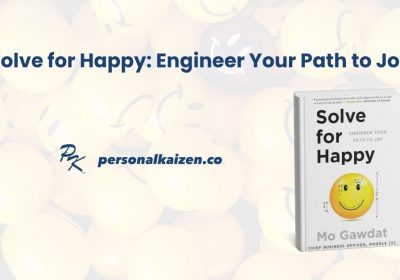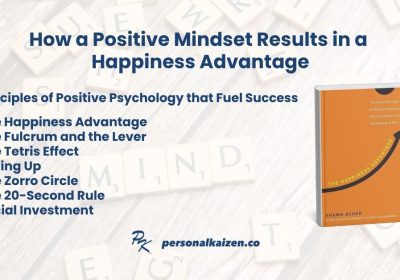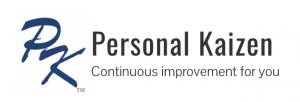We are sharing tips that will help you and other members of the Personal Kaizen community increase your productivity. Today’s post shares a few important continuous improvements I have implemented to my prioritization and scheduling that has really helped increase productivity. Read on to learn improved methods of prioritization and a method to increase your productivity by using scrap time.
Problems with the Franklin Covey Method of Prioritization

Franklin Planner
I used the Franklin Covey system of prioritization for many years, ranking my priorities as A1, A2, A3, all the way to my last C priority. I would then look to begin with the A1 priority and continue as far as I could (interruptions and emergencies always kill progress).
While this system was better than most, it would inevitably lead to issues. For example, my A1 priority might be to follow up with my production manager on a performance issue. I knew my manager was busy getting ready for another meeting and wouldn’t be prepared or in the right frame of mind for my meeting. So, I would need to delay the action and move to my next priority.
My next priority was to call back a client who had quality concerns. Unfortunately, it was too early in the morning for a call – better to wait until after 9 AM. Another delay.
My A3 priority issue was to prepare some data for a company presentation later in the week. While this was very important, it involved some monotonous data manipulation I preferred doing late in the afternoon when I wasn’t so fresh. I also didn’t want to begin this project and need to stop in the middle for my upcoming operations meeting.
Already on to my fourth priority – with nothing accomplished yet. Maybe there is a better system?
Context, Energy, Time, Priority
I learned through experience that prioritization by importance was not the only factor to consider. Over time, I actually made the importance of the action my fourth consideration. Here is the new method I adapted, and still use today:
Context:
The first consideration is your current context or situation. Are you at home? At work? In a meeting room? Waiting at a doctor’s office? What you work on, or are able to work on, will vary based upon the context of where you are.
Energy:

My second consideration is my energy level. Specific priorities are best completed when fresh and with a full battery. For me, these include training sessions I’m conducting, meetings I’m facilitating, employee performance discussions, client proposals, etc. I try to work on high-energy tasks when I am feeling up to them.
Other work is fine for me to complete later in the day or when I am not as fresh. Data entry, basic data analysis, planning and prioritization, and financial planning are several of my lower energy tasks.
Time:
The third item I consider is the time I have available for my priority. I want to ensure plenty of time for performance discussions, client proposals, or key client meetings. Just last week my 30-minute client proposal meeting went for 75 minutes – valuable time for closing and planning the engagement. This was no issue since I allowed for that time.
I have also found it best to leave plenty of time for data entry and analysis work so I don’t need to lose my place in the project. Other tasks only require limited time or can even be done in parallel. More on that is below.
Priority:
Once the context (or situation), my energy levels, and my available time are understood I will want to work on the correct priority.
Using Scrap Time
Using context, energy, and time (CET) has allowed me to become much more efficient at multi-tasking and utilizing the time that might be otherwise wasted. Here are some examples of how I have put this “scrap time” to good use.
Example 1:

CET: A 30-minute drive to a client meeting in the middle of the day.
Selected priority: A project update with an employee or associate.
Why this works: I know when I will be on the road so it is easy to schedule in advance. I don’t need to take notes and a phone reception issue would be tolerated.
Example 2:
CET: Sitting in the waiting room for 5-15-minutes before an appointment.
Selected priority: Check email on my phone and respond to simple questions. Another option is to take a practice lesson for a language I am learning.
Why this works: These are short tasks that can be stopped quickly when my wait is over.
Example 3:

CET: An early morning drive on the way to a client training session.
Selected priority: Listening to a podcast that helps me with Personal Kaizen research.
Why this works: It may be too early in the morning to make a phone call. I also will likely stop the podcast 15 minutes before I arrive at the client so I can begin to change my focus and frame of mind to the upcoming work.
Example 4:
CET: Eating a quick breakfast before beginning the workday.
Selected priority: Glance at my schedule and priorities for the day.
Why this works: This brief review should get the schedule in my brain so I know what I am up against. It also provides an opportunity to optimize my schedule and utilize some scrap time.
How Do You Increase Your Productivity by Using Scrap Time?
Begin to consider how context, energy, and time impact how you schedule your priorities. Let others in the Personal Kaizen community know your tips for using scrap time to get more things done in the comments below.
Our next post also features a short video showing the method Personal Kaizen author Steve Musica uses to schedule his priorities





Great advice and guidance! Love the efficiency of using scrap time!